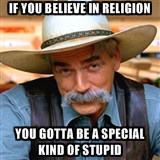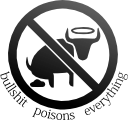|
The human genome is the complete set of genetic information for humans
(Homo sapiens). This information is encoded as DNA sequences within
the 23 chromosome pairs in cell nuclei and in a small DNA molecule found
within individual mitochondria.
Haploid human genomes (contained in egg and sperm cells) consist of three billion DNA base pairs, while diploid genomes (found in somatic cells) have twice the DNA content. While there are significant differences among the genomes of human individuals (on the order of 0.1%), these are considerably smaller than the differences between humans and their closest living relatives, the chimpanzees (approximately 4%) and bonobos. The total length of the human genome is over 3 billion base pairs. The genome is organized into 22 paired chromosomes, the X chromosome (one in males, two in females) and, in males only, one Y chromosome, all being large linear DNA molecules contained within the cell nucleus. It also includes the mitochondrial DNA, a comparatively small circular molecule present in each mitochondrion Most DNA is located in the cell nucleus (where it is called nuclear DNA), but a small amount of DNA can also be found in the mitochondria (where it is called mitochondrial DNA or mtDNA).
Women have two X chromosones
The DNA code is made up of very long chains of four basic blocks (nucleotide bases): Adenine (A), Guanine (G), Thymine (T) and Cytosine (C) A chromosone consists of two of these DNA chains running in opposite directions, the bases pair up to form the rungs of a ladder twisted into the now famous double helix. Pairing of the bases follows strict rules: base A can only pair with base T, and vice-versa; and base G can only pair with base C, and vice versa. Roughly three billion of these base pairs of DNA make up the human genome. In the DNA information, each word, is a combination of three of these four letters A,G,C and T (a triplet).

Evolution from one species to another is a very slow and tedious process caused by random mutations and geographic locations. Living entities slowly change themselves to better adapt to their environment but it takes millions of years and as creatures who now have a life span of 80 years, we cannot see any significant mutations in our lives. Religious people refuse to understand that all living creatures (so far) have common and similar DNA such that one can conclude that evolution is not a theory, but fact. |
Send comments to:
 hjw2001@gmail.com
hjw2001@gmail.com
|




